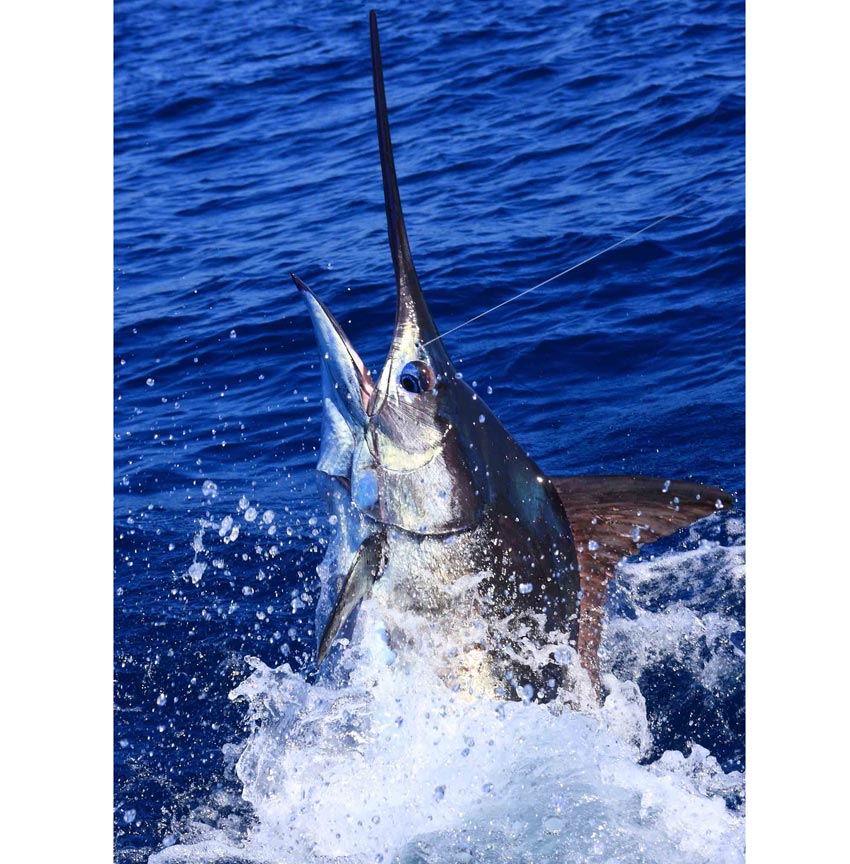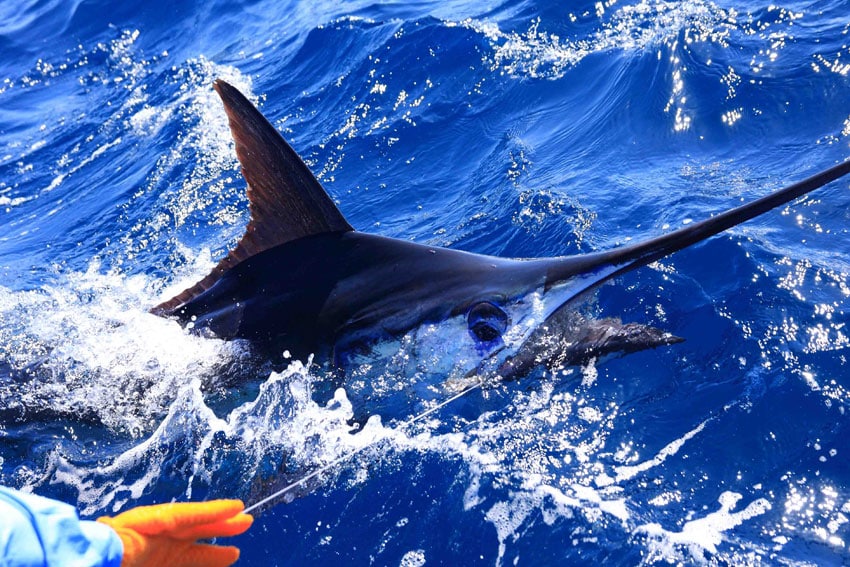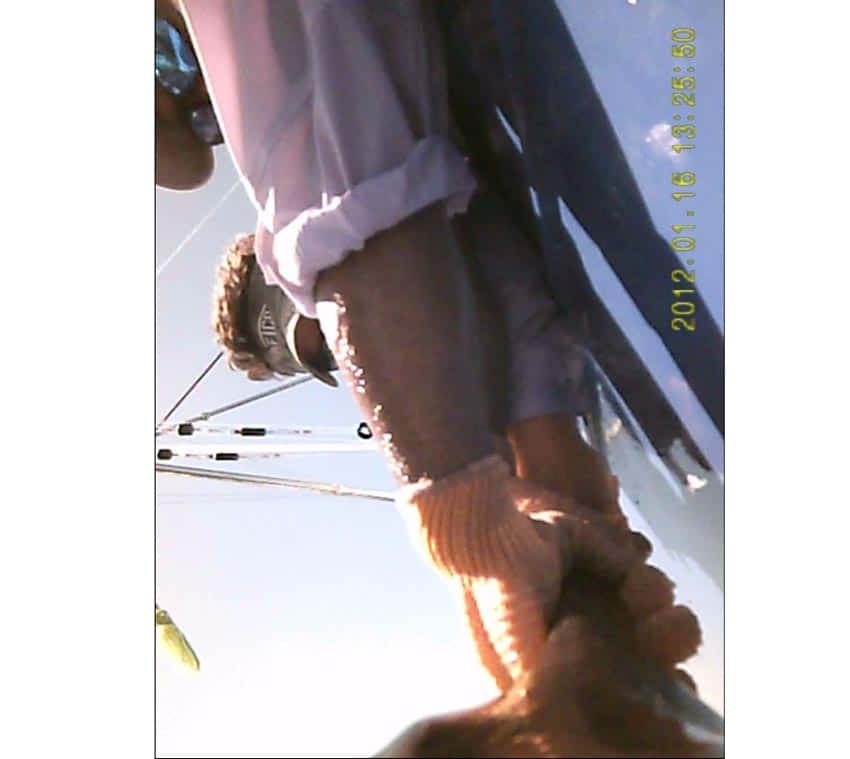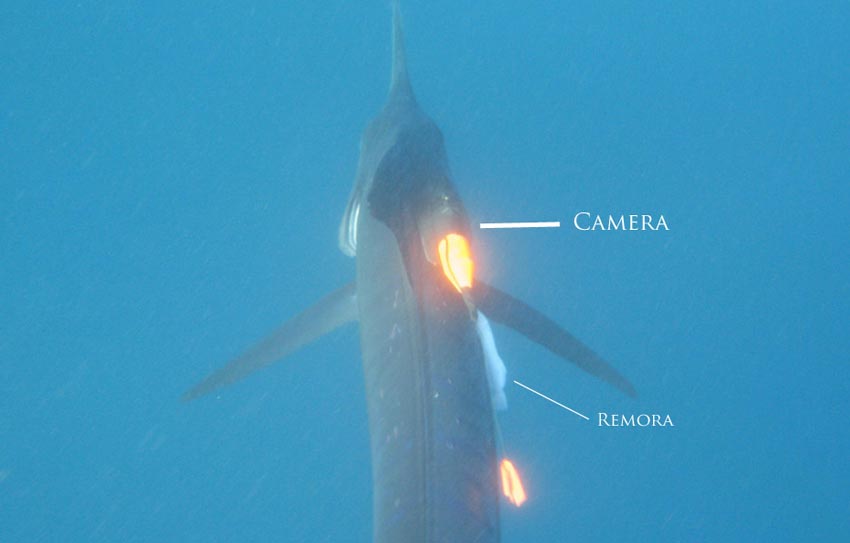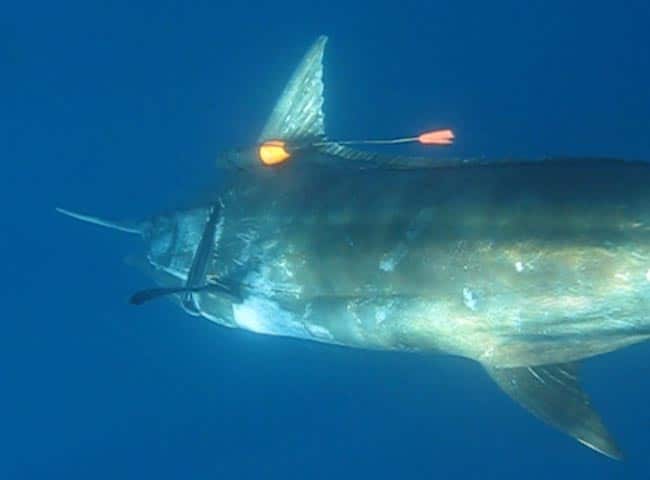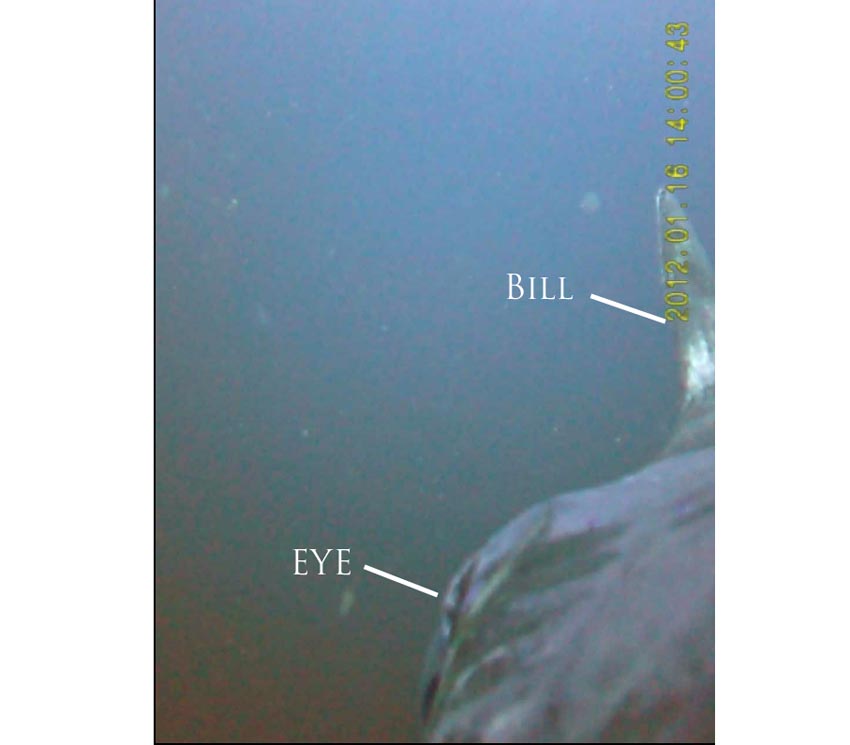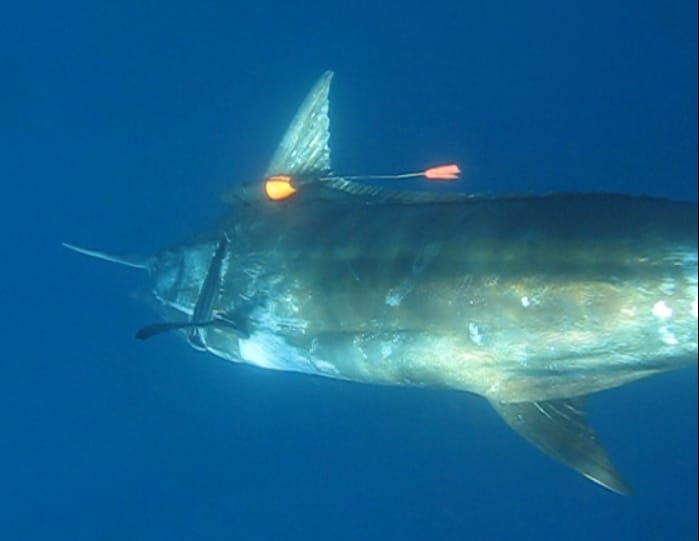
I got an email a couple of weeks ago from biologist Sam Friederichs down at Marina Papagayo down in Costa Rica involving his efforts to affix a Crittercam to a billfish. These underwater cameras have already thrilled the world with amazing footage of free roaming animals such as sharks as they go about their daily lives without human interference. Well, it didn’t take long for the guys to get one on a billfish and this morning Friederichs sent a few pics to prove it!
Here’s what Sam had to say:
I am emailing you to let you know that billfish Crittercams officially are a success. The National Geographic Crittercam is a unique research tool developed to record video information on animal behavior in places and situations that it would be impossible for a human observer. The reason for its success is that the animals are the ones who film their own unique behaviors through the use of special micro-cameras. The cameras are attached in a manner that allows a harmless, first person view of animal behavior as they go about their daily lives without any human influence. Since it’s inception in 1986, founder Greg Marshall and his Remote Imaging team have successfully deployed these cameras on sea turtles, sharks, whales, penguin and even African lions! Now, they have set their sights on another type of ocean giant: billfish.
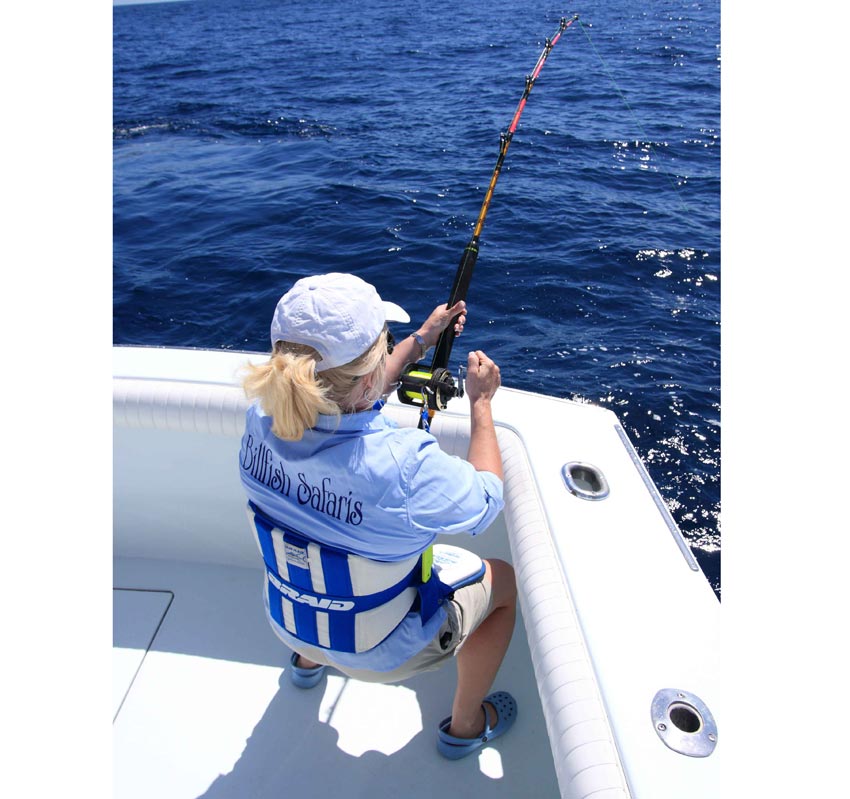
Over the last four days we have been able to follow marlin into the deep and watch it all in HD. Over the last four days we have deployed two systems; one on an estimated 400-pound black marlin and another on a 200-pound striped marlin. We managed to get an hour and a half of free-swimming footage with depth and temperature profiles that correspond with every second of the video!
At this time we have a 100-percent recovery rate of the systems during these short initial deployments with longer deployments planned. We can program the cameras to release in ½ hour increments up to 10 hours – which is the battery life of the unit. We also have to stay within 8 miles of the transmitter, so the first deployments were for only for ½-hour and 1-hour. Please see the attached photos summarizing the work we have done over the last couple of days. We literally see what a marlin sees as it goes about it daily life! This is unprecedented footage and the first successful filming of billfish without any human interaction.
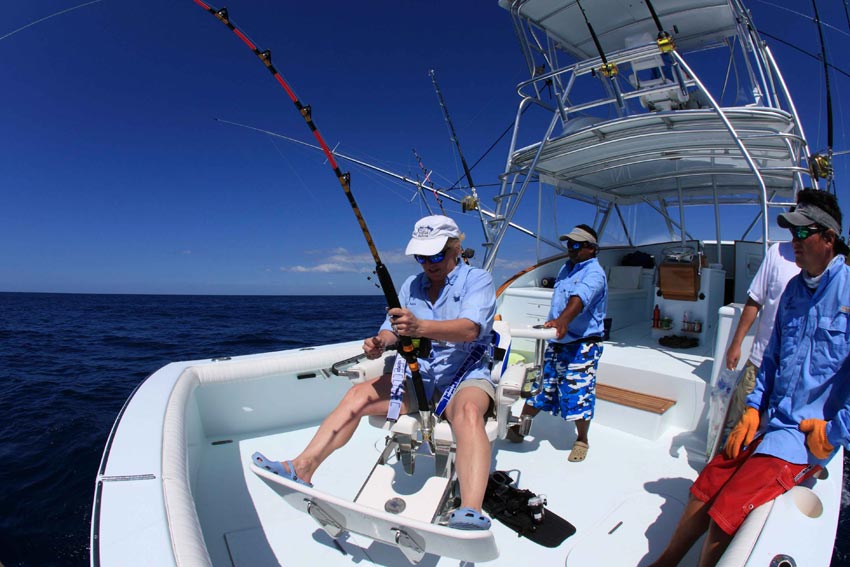
Hopefully after viewing the attached photos your readers will realize that this opens up a very unique opportunity for billfish research and billfish anglers. As it stands National Geographic has left these cameras with us through February, so at the present time, I’m just trying to obtain as much footage as possibly during the next month.
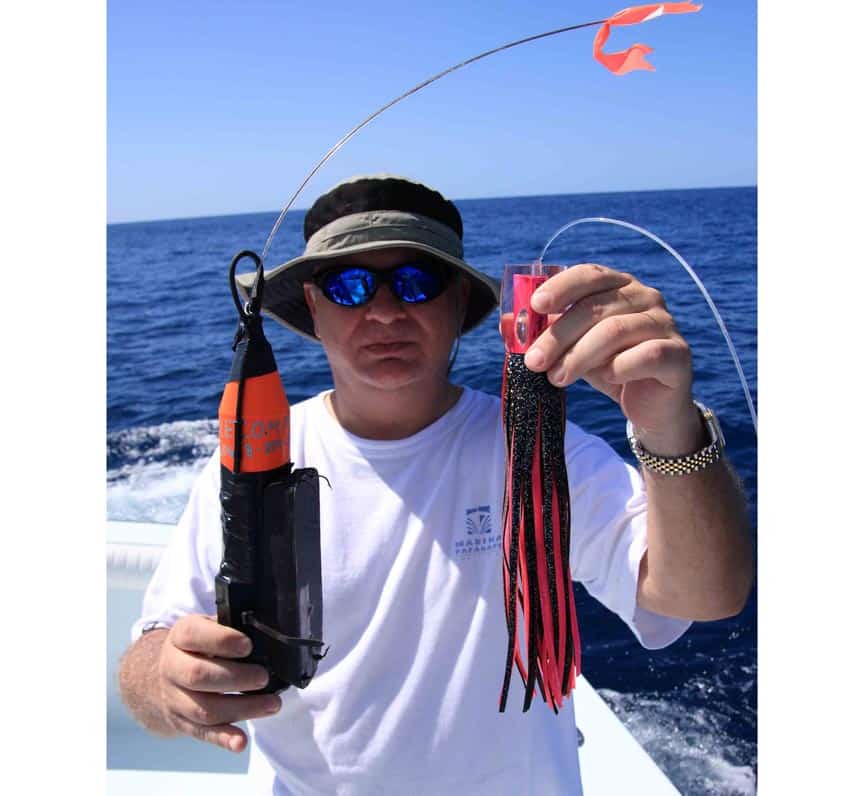
We have always been avid supporters of billfish conservation over the years but, to have the chance to see what the marlin sees as it swims is something special and we are definitely proud and excited that National Geographic Crittercam decided to partner with Billfish Safaris for this work. Billfish Safaris will be reporting on the activities of the Crittercam project starting this month via Facebook and Twitter (@BillfishSafaris). For more information on the National Geographic Crittercam project please visit www.nationalgeographic.com/crittercam and for more information on chasing billfish with Billfish Safaris visit their website at www.billfishsafaris.com.

I can say that without a doubt this is the only place in the world that a charter angler can catch a marlin for National Geographic!
